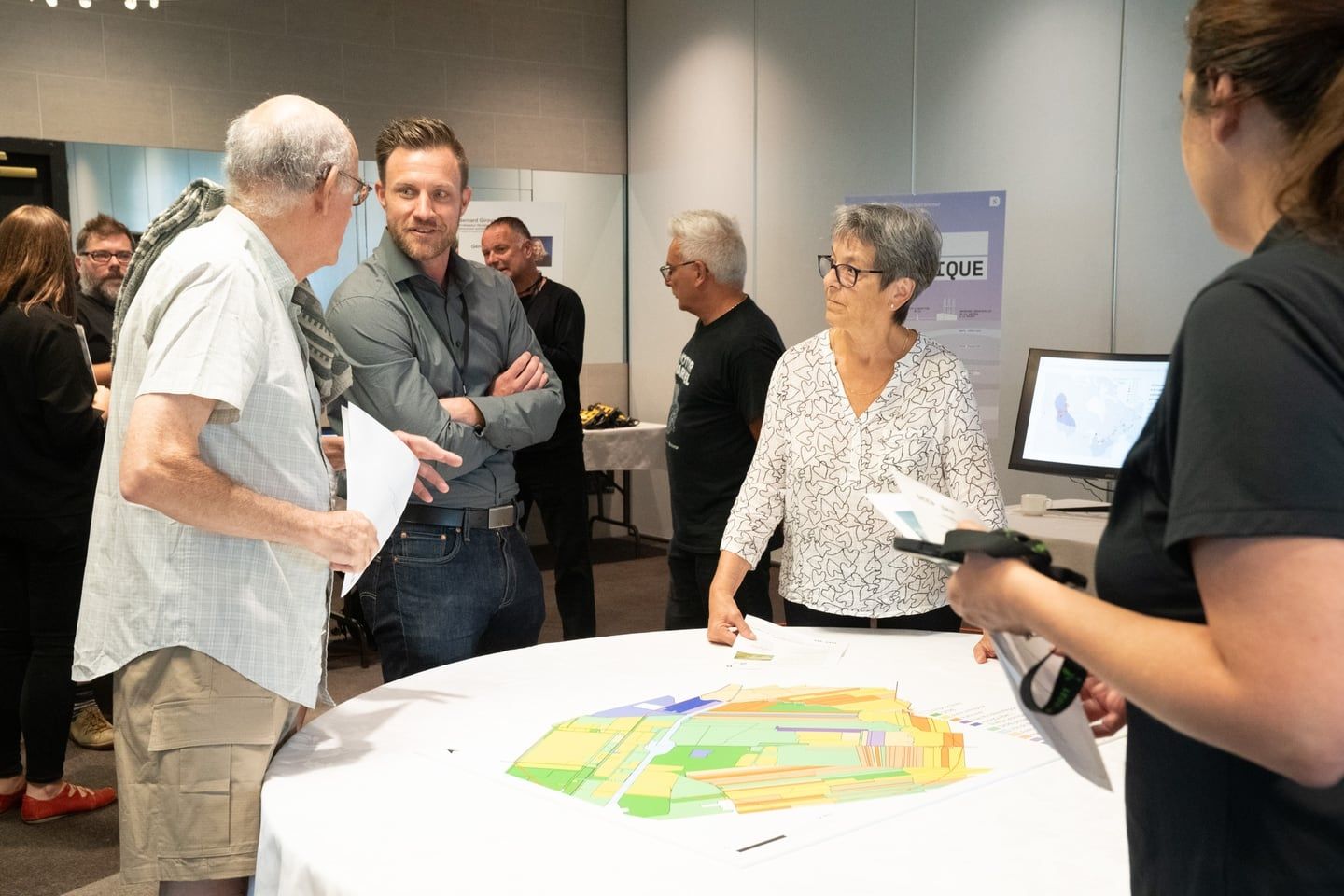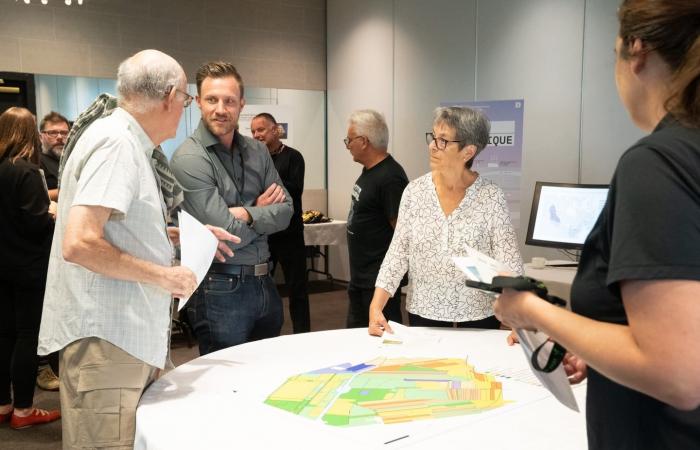This is the bet that Deep Sky is making, a carbon sequestration company which is taking steps to see if the subsoil of Bécancour is able to inject CO2 into saline aquifers, or pockets of salt water. which were created in geological voids.
These are located between 2.3 and 4 kilometers from the earth’s surface, well below the water table and the oil found in the ground. Everything would be injected using vertical drilling into the ground.
The co-founder of Deep Sky, Frédéric Lalonde, specifies that the injection would be done under surveillance to ensure that the CO2 does not rise to the surface. (Stéphane Lessard/Le Nouvelliste)
However, this has nothing to do with the drilling of the shale gas industry which had encountered strong opposition in the region, specifies the co-founder of Deep Sky, Frédéric Lalonde. “It’s a hole of a few inches. There is nothing injected to break the rock. We are simply trying to put a straw between the surface and an aquifer which is already there,” he illustrates.
Bécancour a promising place
According to preliminary information available to the company, Bécancour would be the place with the most potential to carry out such an operation. A hypothesis that the company must validate by carrying out an examination of the subsoil in collaboration with the company Géostack.
Beforehand, she must obtain permission from the owners to produce high-resolution 3D mapping of the basement. It is in this context that open days were held on Monday evening at the Auberge Godefroy de Bécancour, to answer questions from the population while trying to reach agreements with the owners concerned.
The area under study has around 200 owners, but the company would need the agreement of around thirty of them, in strategic locations, to ensure coverage. Around ten agreements have already been signed thanks to the door-to-door canvassing that has taken place in the sector in recent weeks.
The owners only undertake to have a geophone planted on their land, or sensors in the shape of a carrot. Devices used to record the waves reflected in the rock after the vibrations created by vibrating trucks.
Operations which must be carried out far enough from homes to ensure that residents do not feel the tremors and to minimize noise pollution.
These will make it possible to carry out the mapping necessary for the pre-feasibility study and the company expects to know if it can move forward in Bécancour within a year.
It could then expand its activities to other locations in the region. “It’s a bit of a coincidence of the evolution of the planet, but somewhere between Sorel-Tracy and Lotbinière, there is a whole series of zones which are geologically conducive to capturing CO2,” indicates the co-founder of Deep Sky , Frédéric Lalonde, who recalls that injection into saline aquifers has been taking place since 1972.
Geological simulations were presented during the open days. (Stéphane Lessard/Le Nouvelliste)
However, the company must avoid loopholes so that CO2 does not rise to the surface. However, that of Logan, which passes very close to the St. Lawrence River, would be further than we thought according to the company’s data.
“It’s good news. This means that we have more space and that we will probably be able to inject more CO2 more quickly than what the preliminary models predicted,” indicates the co-founder of Deep Sky.
Equipment coming in September
The company has already acquired equipment that it should receive in September. It has in fact chosen around ten companies around the world to buy from them a first version of their reactor to capture CO2 in order to test them in the region.
“We will be able to know how it works, how many tonnes it can remove, how much electricity it takes, what happens when it is cold, when it rains, when it snows. None of these questions have been answered, because it has never been done in Canada.”
— Frédéric Lalonde
If the studies are conclusive, Deep Sky plans to settle in the south of the Bécancour industrial and port park. “We would be close to the transmission station in land that is not necessarily coveted by industries,” indicates Frédéric Lalonde.
Its objective is to be able to capture not only the approximately 1.5 million tonnes of CO2 that are produced each year in the Bécancour industrial and port park, but also to offer a solution to future companies that will set up. In the region.
He is thinking in particular of the factories in the Energy Transition Valley. “The battery manufacturer will want to locate where the energy is clean, but also where its battery will have the smallest possible CO2 footprint,” he argues.
“Bécancour could become one of the hubs for the technological development of carbon sequestration. A place where we could research, develop and probably even manufacture reactors to capture CO2. We could see the development of an axis in the Energy Transition Valley,” continues Frédéric Lalonde.

The targeted area is located at the intersection of Boulevard du Parc-Industriel and the Hydro-Québec right-of-way and extends over a radius of several kilometers. The majority of the study area belongs to the Bécancour Industrial and Port Park Company (SPIPB). (Stéphane Lessard/Le Nouvelliste)
Deep Sky is also targeting the voluntary market for carbon credits to finance its activities, while there are several companies or governments which are buying or pre-purchasing them at the moment.
In addition to Bécancour, Deep Sky is currently looking at the potential of Sept-Îles and Val-des-Sources in Quebec. The company is, however, awaiting the legislative framework for the landfilling of CO2, the adoption of which in the National Assembly is expected by the end of 2024 or the beginning of 2025.
The data collected as part of the pre-feasibility study, which is being carried out in partnership with the National Institute of Scientific Research (INRS), will then be made public.







